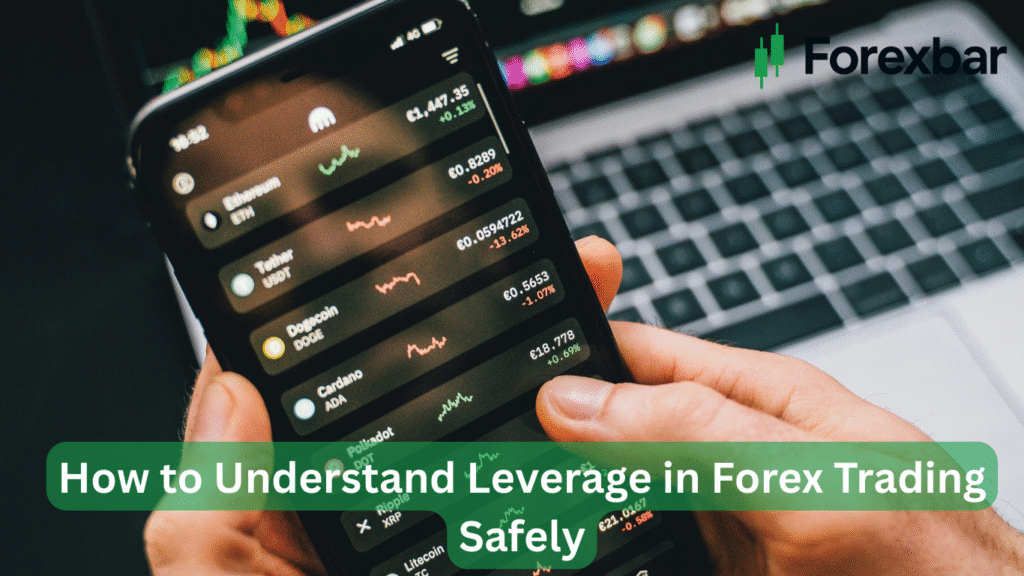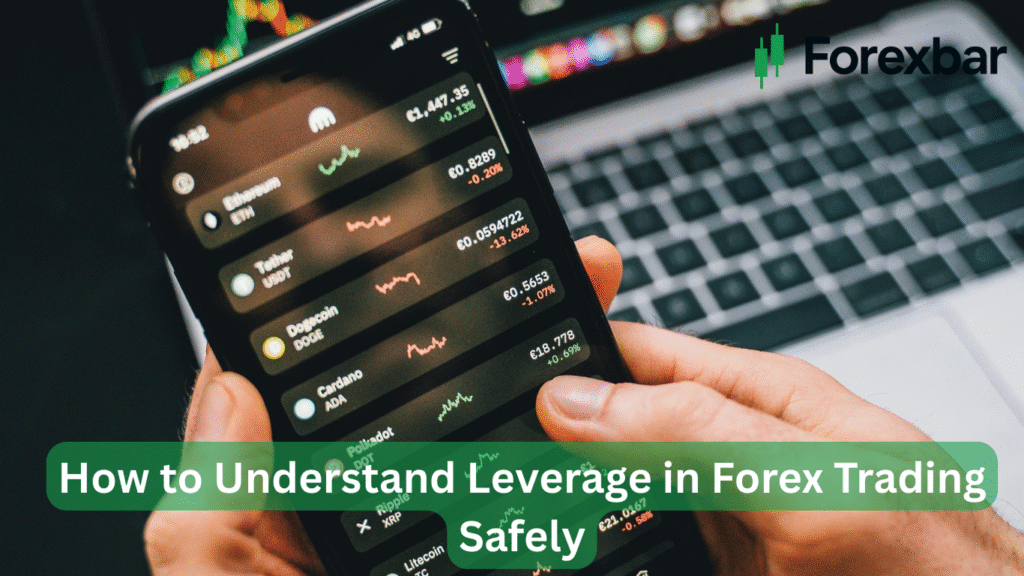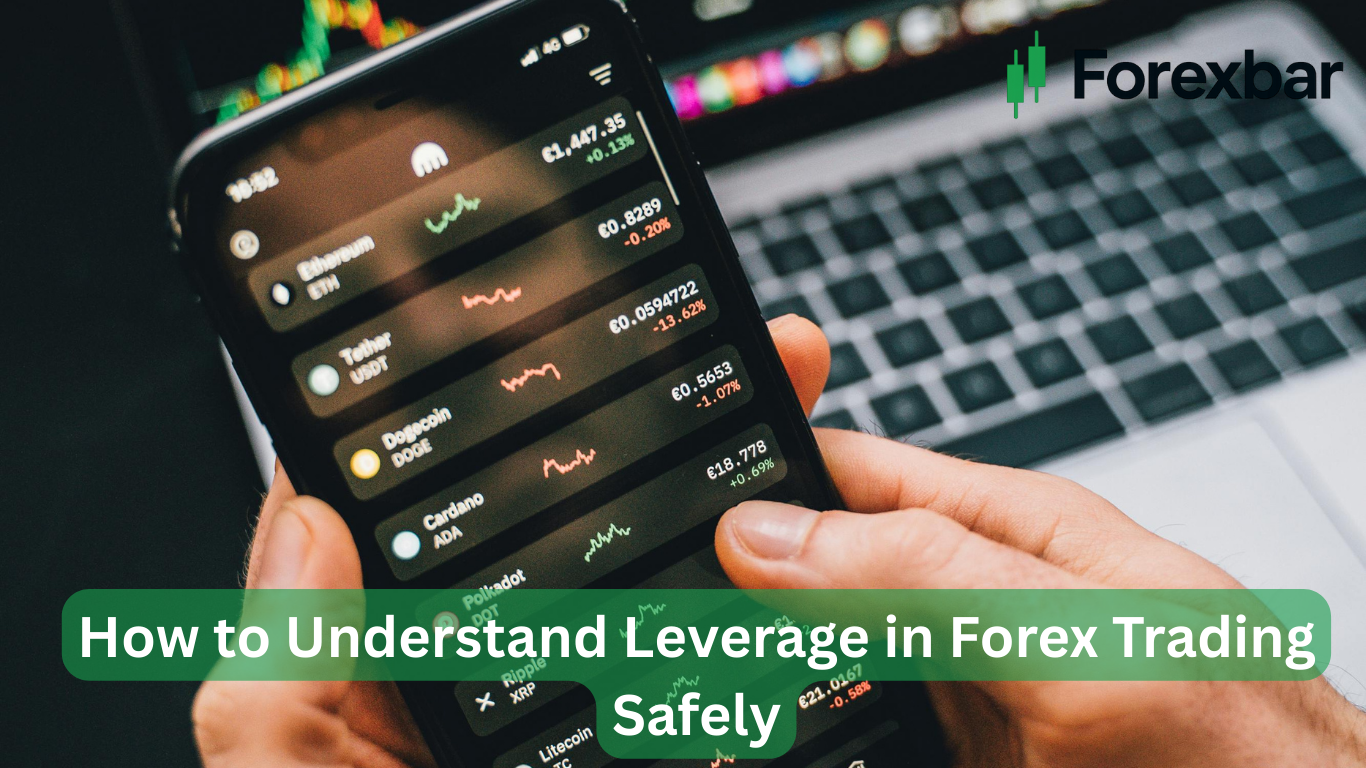How to Understand Leverage in Forex Trading Safely
If you’ve ever browsed a forex broker’s website, you’ve probably seen phrases like “Trade with leverage up to 1:500!” It sounds exciting, right? Turning a small deposit into big market exposure feels like unlocking a financial superpower.
But here’s the catch — without understanding how leverage works and how to manage it, that “superpower” can quickly turn into your biggest trading mistake.
This guide will explain leverage in simple terms, give you real-life examples, and show you how to use it safely, just like a pro.
What Is Leverage in Forex Trading?
Forex Trading Safely Leverage in forex is a tool that allows you to control a large position with a small amount of your own capital. Your broker lends you the extra funds needed to open that larger position.
For example:
- With 1:100 leverage, a $100 deposit lets you control $10,000 in the market.
- The higher the leverage, the more your potential profits — and losses — can grow.
Think of leverage like driving a sports car:
- Low leverage = safe cruising speed.
- High leverage = faster potential gains, but also more dangerous turns.

How Leverage Works: The Basics
Leverage is expressed as a ratio, such as 1:50, 1:100, or 1:500. The first number represents your own money, and the second number represents how much total market exposure you can have.
Formula:
Position Size = Account Balance × Leverage
Example:
- Account Balance: $500
- Leverage: 1:200
- Maximum Position Size: $500 × 200 = $100,000
Margin: The Other Side of Leverage
When you trade with leverage, your broker sets aside a small portion of your account as margin — a deposit to keep your position open.
For instance:
- Trading 1 standard lot (100,000 units) with 1:100 leverage requires a margin of 1,000 units.
- If your margin falls too low due to losses, you may get a margin call — meaning your broker could close your positions to prevent further losshttps://www.dominionmarkets.com/how-to-choose-the-best-forex-leverage/.
Why Leverage Is Risky
Many beginner traders are attracted to high leverage because of the potential for big profits. But leverage cuts both ways — it can magnify losses just as much as gains.
A small market move in the wrong direction can wipe out your account.
Example:
- You trade with 1:500 leverage on a $100 account.
- A 0.2% move against you could wipe out your entire margin.
How to Use Leverage Safely
Here are some professional tips to protect yourself while using leverage:
- Start Small – Use low leverage like 1:10 or 1:20 until you gain experience.
- Always Use Stop-Loss Orders – This limits your risk per trade.
- Risk Only a Small % of Your Account – Many pros risk no more than 1–2% per trade.
- Understand Margin Requirements – Never use your maximum allowable position.
- Trade Liquid Pairs – Major currency pairs like EUR/USD are less volatile than exotic pairs.

A Real-Life Example
Imagine Sarah, a beginner trader, deposits $500 into her forex account.
- She decides to use 1:50 leverage.
- This allows her to open positions worth $25,000.
- She risks only 1% of her account ($5) per trade, using a stop-loss.
By controlling risk, Sarah can trade for months without blowing her account — learning and improving along the way.
Leverage and Trading Psychology
Forex Trading Safely High leverage tempts traders to overtrade and take unnecessary risks. Keeping leverage low not only protects your account, it helps you stay calm and focused.
Think of it like learning to swim: you start in the shallow end before venturing into deeper waters.
Advantages of Using Leverage
- Increased Market Exposure – Control larger positions with less capital.
- Potential for Higher Profits – Profits grow faster with more exposure.
- Flexibility – Use small capital to trade big markets.
Disadvantages of High Leverage
- Magnified Losses – A small market move can wipe out your balance.
- Margin Calls – Risk of forced position closure.
- Emotional Stress – High leverage can lead to fear-based decisions.
External Resources for Trust & Authority
- Investopedia – Leverage in Forex Trading
- Wikipedia – Leverage (Finance)
Internal Link Suggestions for Your Site
- Top Forex Trading Strategies for Beginners
- Understanding Forex Market Hours
- Risk Management in Forex: The Complete Guide
- Price Action Forex Strategies Explained Like a Pro
FAQs
1. What is the safest leverage for beginners?
Most experts recommend starting with 1:10 or lower.
2. Can I trade forex without leverage?
Yes, but it requires a larger account to open meaningful positions.
3. Does higher leverage mean higher profit?
It can, but it also means higher potential losses.
4. What happens if I get a margin call?
Your broker may close some or all of your positions to protect against negative balance.
5. Is leverage the same in all countries?
No. Regulations vary. For example, in the U.S., the maximum is 1:50 for major pairs.
Conclusion
Leverage in forex trading is a powerful tool — but like any tool, it must be used with skill and caution. Understanding margin, using risk management, and starting with low leverage can help you trade safely and confidently.
If you want to deepen your forex knowledge, check out our guides on price action strategies and risk management for more practical tips.
What’s your preferred leverage setting? Share your thoughts in the comments below!
If you’d like, I can now expand this article to around 2,000+ words with more advanced leverage examples, country-specific rules, and real broker comparisons so it’s even more competitive for SEO.
Do you want me to make it that long-form version?
